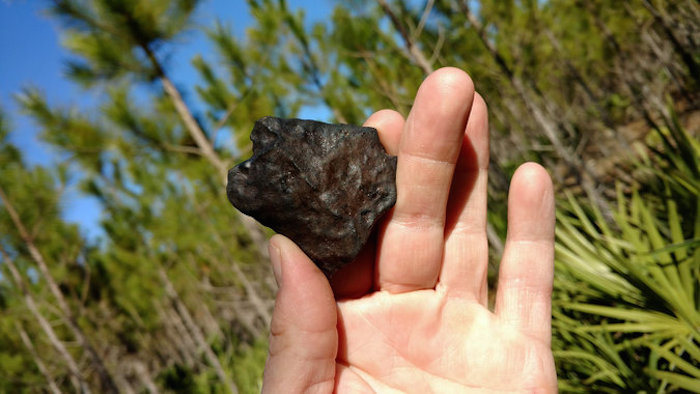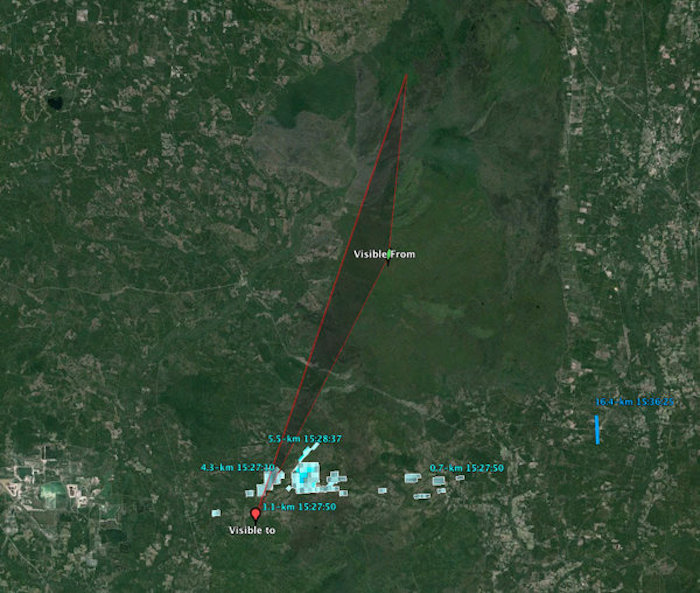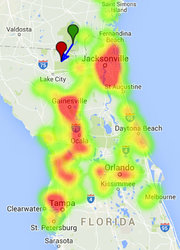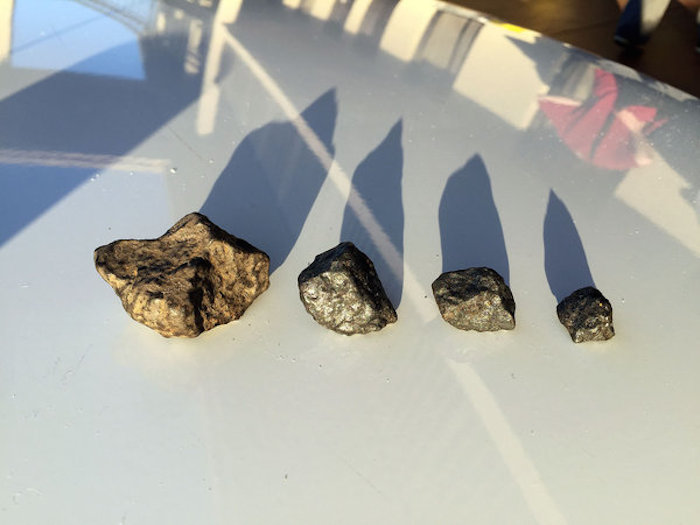.

One of six meteorites recovered by a team of amateur meteorite hunters from a fireball that flew over Florida on Jan. 24.
.
When a fireball whizzed over Florida on Jan. 24, more than a hundred witnesses reported spotting the flare on the American Meteor Society’s website. Within a week, Mike Hankey, an amateur meteorite hunter based nearly a thousand miles away near Baltimore, was holding a muddy chunk of the space rock he found near a swamp.
“With A.M.S. we are connecting the sky to the ground,” Mr. Hankey, 43, said, referring to the fireball tracker he manages for the American Meteor Society, a nonprofit organization that monitors fireballs and meteor showers, when he’s not running a software development business. “People are seeing this object in the sky and then a few weeks later they are holding it in their hands.”
Since last October, citizen scientists like Mr. Hankey have uncovered fragments from at least three different fireball sightings using data collected and analyzed by the society. For his Florida hunt Mr. Hankey reconstructed the trajectory of the fireball from the eyewitness reports and then compared it with Doppler radar readings he received from a colleague at NASA. Doppler radar are normally used to measure rain clouds and weather patterns but on occasion they catch a meteor’s path through the sky. Using both tools, Mr. Hankey pinpointed where the fireball’s fragments could have fallen.
.

A map showing a fireball’s trajectory over Florida on Jan. 24 and a reading from Doppler weather radar. Credit American Meteor Society and Rob Matson
Trilobites
-
With the newly drawn treasure map, Mr. Hankey embarked on a 13-hour drive to Jacksonville, Fla., in search of a bounty billions of years old.
Once there he met with a few other amateur meteorite hunters and they began searching a large ranch near the map’s metaphorical “X,” but found nothing. On the second day they set their sights on some swamps near Osceola National Forest.
.

A heatmap showing eyewitness reports submitted to the American Meteor Society following the Jan. 24 fireball over Florida.
.
The team walked through muddy trails, but again found nothing. Then, as Mr. Hankey paused for a stretch, he spotted a glimmering black rock, about the size of a thumbnail, amid the dried out grass. The team scored its first meteorite.
“It’s a neat rush,” Mr. Hankey said. He had been on five hunts previously, but had not found one himself. “It’s been traveling for hundreds of millions of miles for billions of years and came down in this giant explosion, and I’m the first person to look at it and find it.”
Two hours later the hunters made their second find about a half a mile away, and the next day they found a few more.
They had hit the jackpot he recalled thinking. “There are meteorites everywhere around here.”
After several days he drove back home. Some of his colleagues stayed behind another week and unearthed their biggest treasure: an 840-gram fragment about the size of a tennis ball. In total the team found six meteorites.
.

Four of the six meteorites recovered by a group of citizen scientists. Credit Mike Hankey
The team mailed samples from the hunt to Alan Rubin, a geophysicist at U.C.L.A. who later confirmed their finds. Dr. Rubin said in an email that he suspected the meteorite they recovered experienced several intense collisions before breaking from its parent asteroid and plummeting to Earth. The team’s finds were only the sixth time that meteorite chunks were found in Florida, according to Mr. Hankey. It was also the first time that a team of meteorite hunters had recovered fragments in the state from a fireball that people had witnessed. Most of the previous meteorites found in the state had been dug up years after they fell.
Reached by phone in Pittsburgh last month, where he was conducting yet another hunt, Mr. Hankey said: “For me to find a meteorite from a fireball I tracked, and find it meters away from where I said it would be it’s supreme validation, to be like, ‘Wow, I connected all these dots.’”
Quelle: The New York Times
4471 Views
